"Comet running" concept proposes hitchhiking future for space stations
Interstellar comets become vehicles for space travel between the different planetary systems of our galaxy in this conceptual design by New York-based Clouds Architecture Office (+ slideshow).
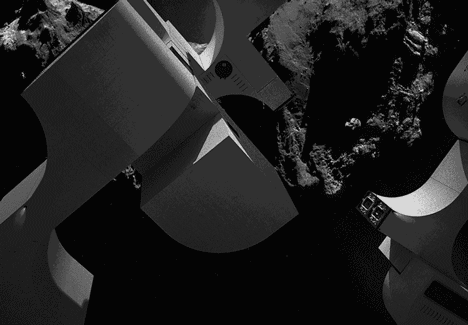
Ostap Rudakevych and Masayuki Sono, the founders of Clouds Architecture Office, propose floating space stations within the orbit of moving exocomets – icy celestial bodies that exist outside Earth's solar system. As the comets travel the space stations would move with them, transporting astronauts across the galaxy.
"Comet running presents a provocative opportunity for expanding our reach in outer space by lowering the cost of long-distance space flight," they told Dezeen.
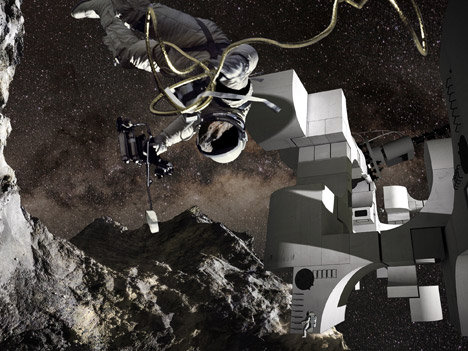
These space stations would source fuel and oxygen from the comet's embodied energy, while new architectural structures could be created on its surface by 3D printing with harvested ground material.
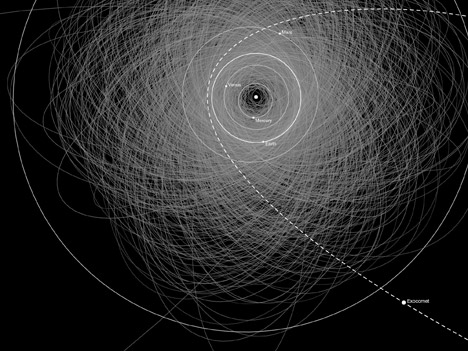
"The project envisions harnessing a comet as an interstellar vehicle," said the architects. "The target comet would be prescreened to ensure it contains volatile compounds necessary for sustaining the mission."
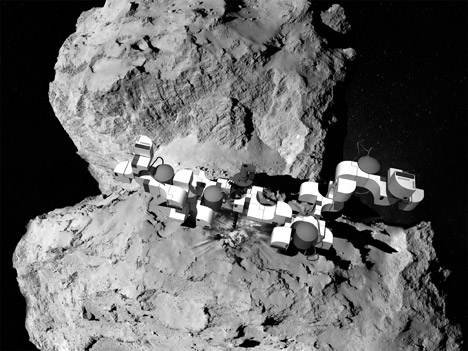
The Comet Runner project was inspired by the European Space Agency's recent Rosetta mission, which involved landing a probe on the surface of the comet Churyumov-Gerasimenko.
Rudakevych and Sono believe this sets a viable precedent for their futuristic concept – that any manned flight could take place by simply "hitching a ride" with an already moving body and using it to sustain life.
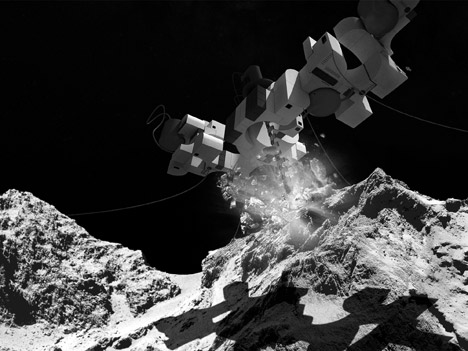
"It is hypothesised that there are billions of roughly 20-kilometre-wide comets in the Oort cloud," they said, referencing the belt of icy objects orbiting the outer reaches of the solar system.
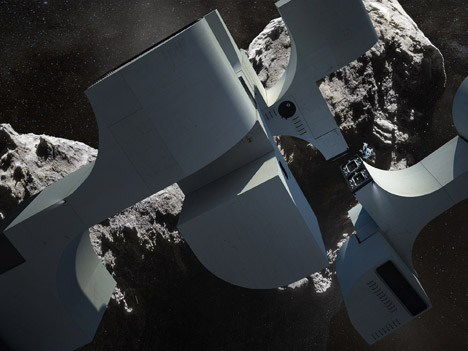
"Many contain compounds such as water, methane, carbon monoxide and hydrogen cyanide, which can be converted to things useful for a long distance space mission, such as fuel, oxygen, plastics, refrigerant and fertiliser."
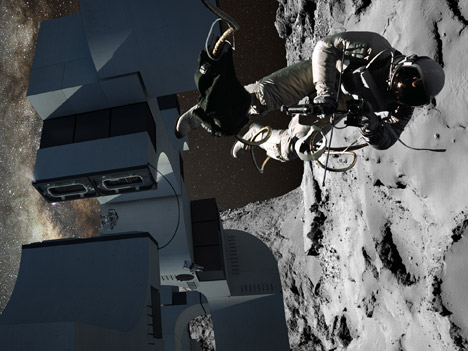
The space station itself would include a processing plant and laboratory for sorting raw materials and converting them in usable compounds, storage areas for extraction equipment and refined materials and a greenhouse.
There would also be separate living quarters, but the use of 3D printing would allow some of these to be constructed on the surface of the comet, using trawled ground-surface dust as a material.
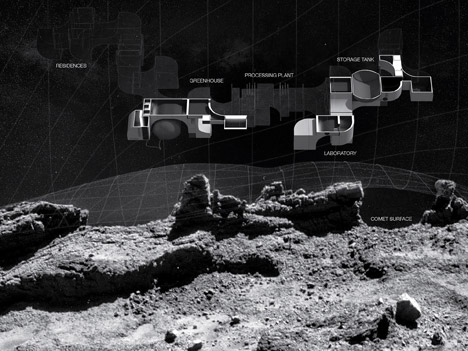
Clouds Architecture Office isn't the first office to consider the possibilties for 3D printing in space – NASA is currently developing an orbiting 3D-printing factory, while Foster + Partners is exploring the possibilities of 3D printing buildings on the moon using lunar soil.